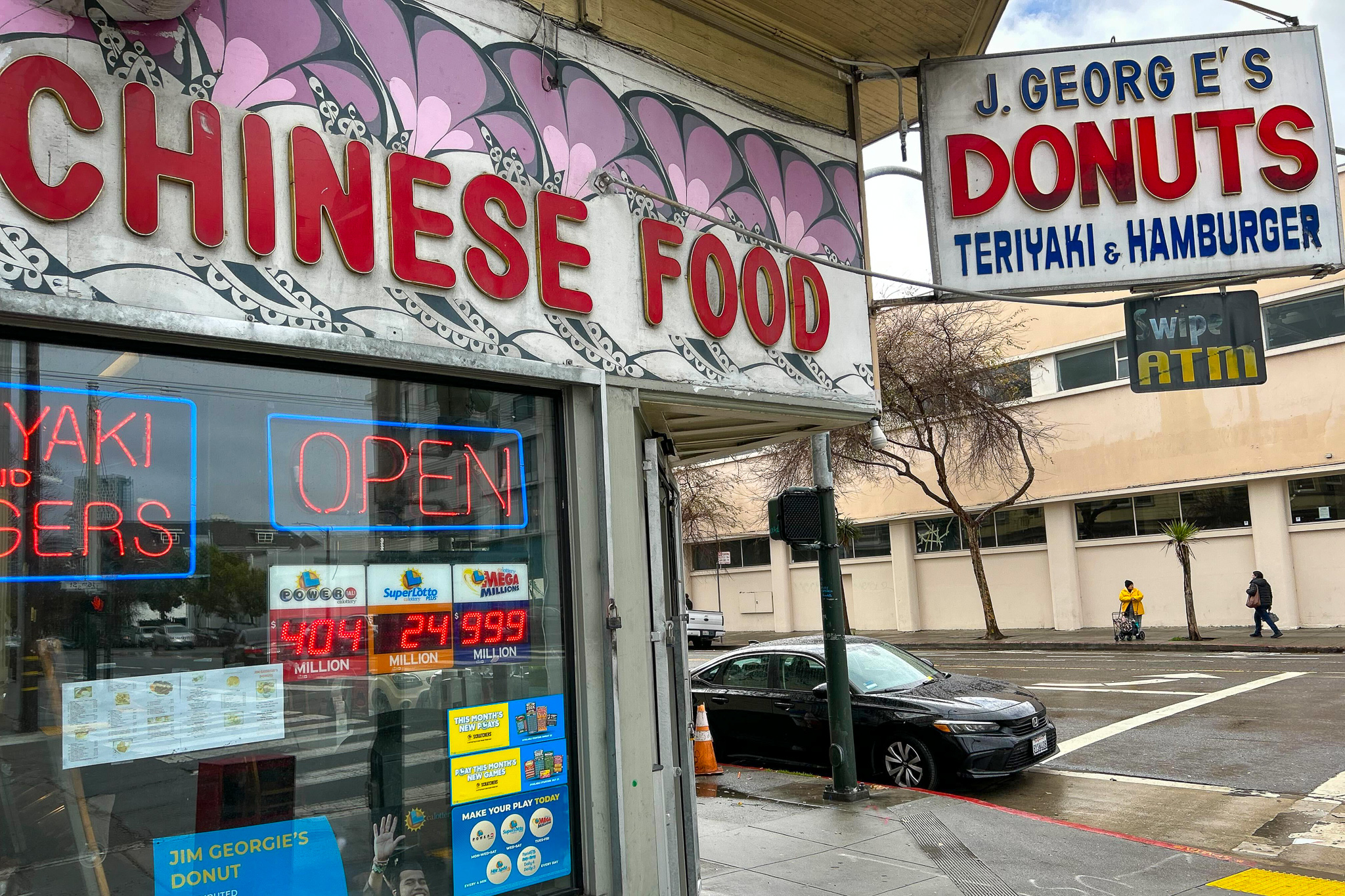Jim Georgie’s Donuts (& Chinese Food) in the Mission is a rare breed in this part of the country. Akin to a bodega in New York, the husband-and-wife duo at Jim Georgie’s sling delicious, oozing egg sandwiches all made-to-order on their flat-top grill.
The pair, who wished to remain unnamed, said they normally pay $20 for a case of 200 eggs. But since December, that price has ballooned to $115.
Despite that, they haven’t raised the price of their classic egg sandwiches yet, but might if the recent egg crisis doesn’t improve soon.
“You know what’s strange?” the wife at the counter asked. “You would think the price of chicken would be crazy, too. But it’s not.”
Egg-splaining the Crisis
Thankfully for businesses like Jim Georgie’s, the worst of the egg-flation crisis might be behind them.
According to Brian Moscogiuri, a spokesperson for Eggs Unlimited, one of the largest egg companies in the nation based in Irvine, the wholesale price for eggs is already down 20% “or more” from the peak “holiday baking season” of November and December.
“I think what we’re seeing here is an ‘act of God,’” Moscogiuri said. He pointed out that the avian flu outbreak affecting chickens worldwide was not the only thing driving up prices. “You have to remember that California recently went cage-free, too, plus the fact we’re dealing with the same inflationary problems that everyone else has.”
Moscogiuri said costs have also gone up for material to make the packaging for the eggs, gas for transport, and labor.
In 2015, a similar flu outbreak struck the poultry industry. According to the U.S. Department of Agriculture, nearly 34 million birds were lost between the months of March and August, also known in the industry as the “spring migration.”
Moscogiuri recalled the virus was stamped out afterward and prices recovered by fall 2015. This time, however, he says the flu returned and further decimated supply. Last year, the nation lost over 43 million birds or “layers”—as Moscogiuri calls chickens.
“It’s been a challenge getting supply back up,” he said. “There are biosecurity measures we have to take and then it takes time for the population to grow again.”
